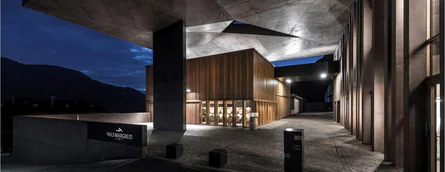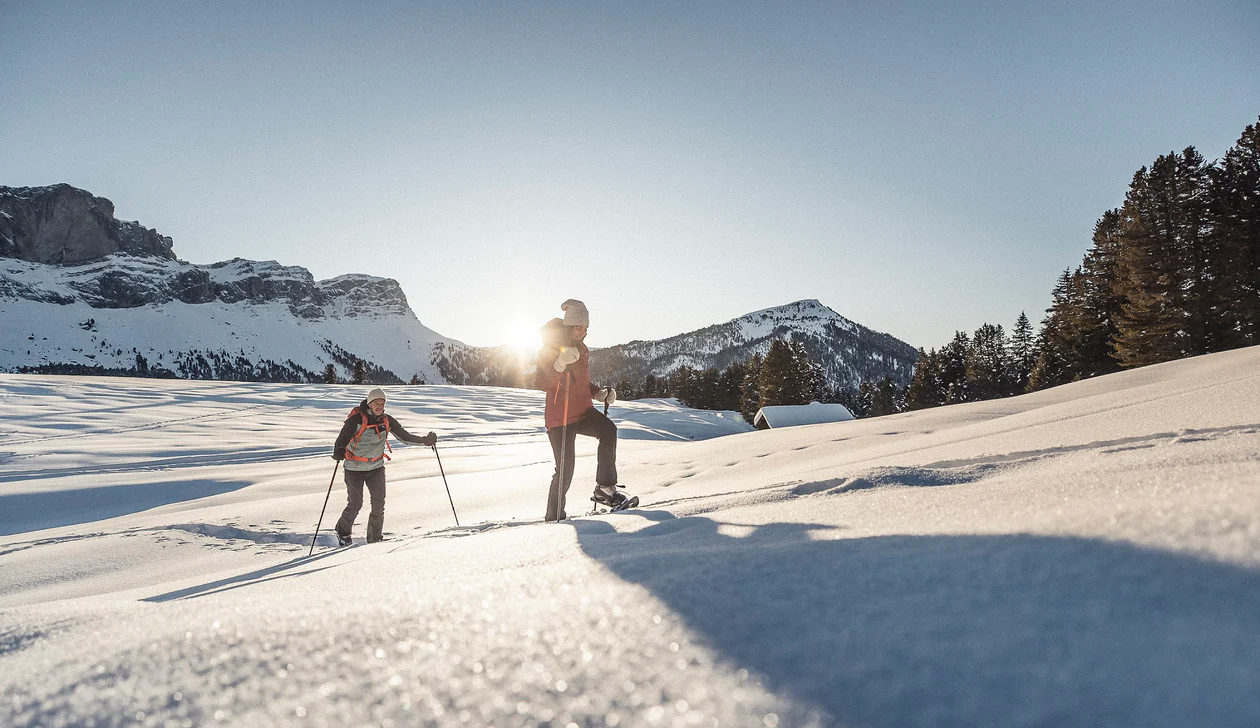The protective arc of the Alps to the north, the Mediterranean influences from the south, the 1,800 hours of sunshine each year, and temperature differentials between day and night of up to 20° C allow the grapes to thrive with unique characters that reflect their terroirs in the flavor spectrum of Pinot Blanc, Sauvignon Blanc, Chardonnay, Pinot Grigio, Merlot, Cabernet Sauvignon, and Pinot Noir: from Alpine-fresh to fruity-elegant. The demand for quality and uniqueness is also expressed in the architecture of the winery building at the Nals Margreid Winery. Reddish-brown exposed concrete walls rise up nine meters into the sky. In between is the barrique cellar with the small oak casks, spanned by a colossal, asymmetrically folded roof.
With the careful restoration of the old manor into the headquarters and the “1764” wine bar, the synthesis of the historical buildings with the international prizewinning contemporary architecture has achieved perfection. This is where the wines of the Nals Margreid Winery can be experienced with professional sommelier advice at various levels. These include, for example, Sirmian, which was crowned as the Best White Wine in All of Italy by the renowned Italian wine guide Vini d’Italia from Gambero Rosso.






















